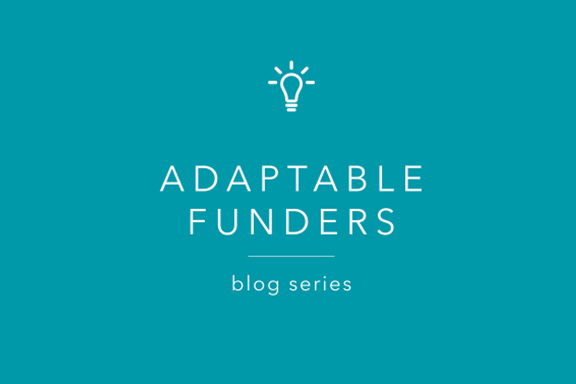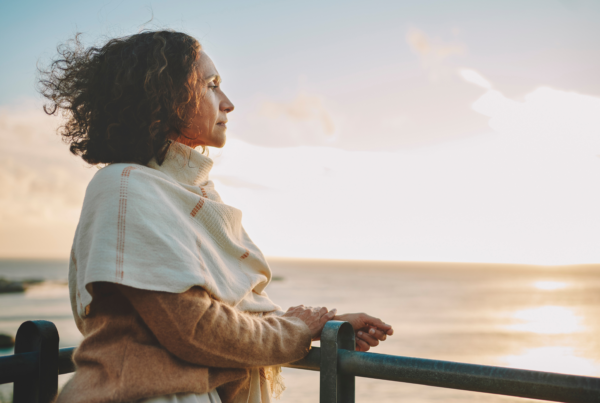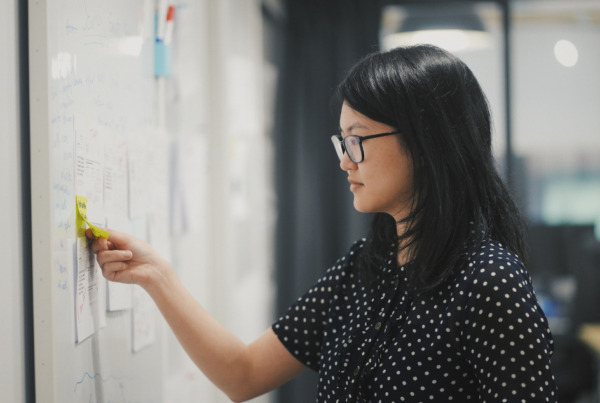
In the last few months, the world has changed, and all of us with it. The myriad issues philanthropy has spent decades trying to address on many fronts, and in every corner of the world, have converged and exploded in ways that are prompting funders of all kinds to reshape or even completely pivot their work.
As the COVID-19 pandemic and a global push for racial equity and social justice unfold, some funders already stand out for how they have adapted to upheaval and moved forward in ways that are both responsive and proactive. TPI is talking with a few of these funders, with different structures and approaches, to discuss their experiences and lessons learned so far, and to learn more about the questions they are grappling with. We hope these conversations will spark ideas and expand discussions within the broader field.
We start with The Russell Berrie Foundation, a long-time TPI client. Founder and CEO of the international toy and gift company Russ Berrie & Company, Russ Berrie created a private foundation in 1985 that invests in innovative ideas to tackle diabetes, humanism in medicine, and religious understanding and pluralism; supports Jewish communal life, and individuals who make a significant difference in the lives of others; and has worked to elevate the profession of sales. Russ and his wife Angelica chose New Jersey, Metropolitan New York, and Israel as primary geographic areas. Six years after Russ’ early death in 2002, the trustees selected Ruth Salzman as Foundation CEO. As Ruth shared in our interview, TPI founder Peter Karoff and his team “helped Russ to develop his philanthropic persona and worked closely with all the trustees to set priorities. When (Russ) passed away he was on a journey with chapters yet to be written, but he left guidance for trustees: ‘Step into my shoes, do what I would have done. Times will change.’” Nearly two decades later, the Foundation is applying that guidance in a very changed landscape. As of July of this year, the Foundation has awarded $5 million in emergency grants to address medical and healthcare needs, as well as food and economic insecurity, in an impressive response to the COVID-19 pandemic. We sat down with Ruth Salzman to learn more.
TPI: Looking back, what structures and existing principles do you think best prepared the Foundation for crisis response?
Ruth: Russ [Berrie] created a framework to allow for evolution and enable the Foundation to be entrepreneurial and to operate close to the ground. The first principle is to invest in strong leaders. His eye was always drawn to passionate leaders. We continue to look for passion, vision, and execution capability. We know our grantees well and they’ve risen to the situation in innumerable ways. The second principle is to build trusted relationships. The relationships formed over time with grantees have proven to be a tremendous asset. Most, although not all, of our emergency grants were awarded to existing grantees with great track records. A third principle is to avoid excess process and bureaucracy. We aren’t one size fits all; we’re able to right size the due diligence and move quickly. All grant proposals go to the board, but we were able to activate a very streamlined process for emergency funding. It is also important to add that we do not accept unsolicited funding requests. Most often we provide resources to existing grantees we understand well, but we also leverage the networks and expertise developed by RBF program officers in their respective areas of concentration.
TPI: Can you outline the thinking and strategies behind your emergency grants?
Ruth: We were able to be constructive right away around COVID-19. Angelica [Berrie] was concerned immediately for the healthcare system and identified the critical priority of protecting healthcare workers – and the board agreed. Our first round of grants funded personal protective equipment (PPE) for healthcare workers, telehealth, and services for frontline workers like childcare through the YMCA Alliance. We also supported some of the most urgent basic needs such as food insecurity in diverse communities.
The great majority of our grants went to existing grantees. We chose them carefully to start with, and we trust them, obviously financially but also what they prioritize. For example, the Holy Name Medical Center in Teaneck, which was the New Jersey epicenter of the crisis, needed PPE and ventilators. The Israel Center for Medical Simulation got to work immediately on developing training protocols for medical personnel confronting this highly infectious virus. $100K of our support allowed MSR, as the Center is known, to purchase a highly specialized mannequin able to simulate specific lung issues. There was no other source of support that would have made the purchase possible, and it was so clearly needed.
Food insecurity in communities was also a huge issue early on and of course continues. Our Diabetes Prevention Initiative (DPI) in two local New Jersey towns focuses on lifestyle – food and activity – which gave us an understanding about issues of access to fresh healthy food in our community. There’s a disconnect between where the food is, where the people are who need it, and how to get the supply to the demand. DPI gave us a nascent infrastructure for connectivity. We have two providers in our program that are now major distributors of fresh, healthy foods because of the dots we were able to connect.
The capacity you build is there for you as an asset.
TPI: What are you thinking and anticipating long-term?
Ruth: We are in early innings with COVID-19 and with the larger systemic issues that were hiding in plain sight. The economic challenges are enormous. Nonprofit funding is going to be even more constrained in 2021 than in 2020. We have tried to give some breathing room to our grantees, but the hard questions are not going away. What are they doing now to be prepared for a resurgence of cases? What have they learned so far? Where are the opportunities – what is working better now? For example, the Bergen Volunteer Medical Initiative diabetes prevention program is seeing increased patient compliance thanks to telehealth. Instead of having to take time off work and plan around bus or train schedules, patients are taking 20-minute breaks to check in. This is just one small example. New technologies and new economic models will emerge from the pandemic.
Longer term, we think about “Day After” and resilience, recognizing that we are in a time of tremendous uncertainty. Listening, learning, and collaborating are all critical skills right now. But we should also have the confidence and willingness to invest for the long term.
TPI: What is the role, then, for philanthropy and what should funders know if they are starting out or want to become more adaptable in a crisis?
Ruth: Philanthropy will never replace government budgets that provide the vast proportion of support for health and social services, and for access to food. What philanthropy can do is to be fast, nimble, and catalytic. We are able to provide risk capital for R&D, and to convene and engage. Societal forces have a lot of built-in inertia. Philanthropy has the ability to say, “You in your box there, and you in your box there, we all want to get to the same endpoint. Let’s talk, understand each other, coordinate efforts, and close the gaps.” This is a time that demands all hands on deck. If philanthropy can help get the right people around the table, help them generate solutions and then catalyze action by funding innovative ideas as R&D, we will have made a significant contribution. And we are the sector that can ensure that inclusion, diversity, and equity are consistently incorporated.
Philanthropy is also the critical source of support where the public sector does not reach. As we look at a very tough few years ahead, philanthropy remains essential for ongoing investment in the arts, education enrichment, and culture. What will adaptation look like here?
As a sector we are trying to make choices and direct resources in ways that make sense, to make things better. For The Russell Berrie Foundation, funding the trusted institutions we have supported over time has proved to be an investment in capacity that is being heavily relied on in the emergency. We want our grantees to be systematically aligned and positioned for long-term resilience to take advantage of the opportunities we foresee and meet the challenges we never anticipated.
—
And that truly sums up why the Russell Berrie Foundation has been able to be nimble and effective in its response to these unprecedented crises. In leveraging philanthropy – not just funding, but ever-evolving expertise and networks across sectors – through careful listening and strategic partnerships, the Foundation has become a trusted player in complex environments, quick to see and respond to opportunities to provide solutions both for long-term, positive change as well as for sudden, overwhelming need. Visit the Foundation’s website to learn more about their efforts in response to COVID-19.
Stay tuned for future interviews as part of our new Adaptable Funders blog series.


